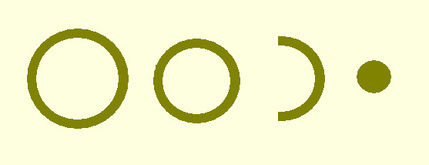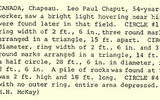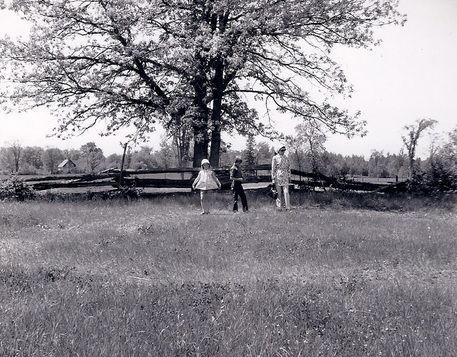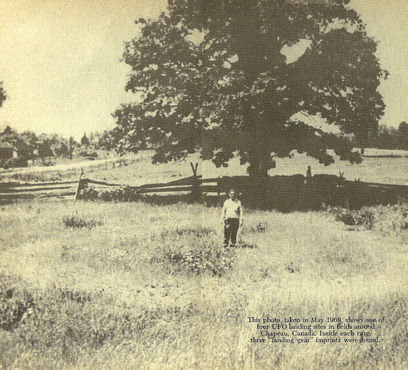| ID | #1490617902 |
| Añadido | Lun, 27/03/2017 |
| Autor | July N. |
| Fuentes | |
| Fenómenos | |
| Estado | Caso
|
Datos iniciales
En el canadá, un suburbio de Шапо (quebec) fue fotografiada la formación de примятой de la hierba. En los distintos informes, la ubicación de la figura de manera diferente. A veces se menciona que el incidente se produjo en las afueras de Pembroke, ontario.
El autor original del artículo se basa en la descripción de ted phillips.
1. Un anillo con un diámetro de 32 pies, 2 pies, 6 pulgadas de espesor;
2. Un anillo con un diámetro de 28 pies, 2 pies y 6 pulgadas de espesor (aproximadamente);
3. Semicírculo de diámetro de 28 pies, 2 pies, 6 pulgadas de espesor;
4. El círculo de un diámetro de 9 pies.
Traducido del servicio de «Yandex.Traductor»
Noticias originales
As with the Camrose case of 1967, there is considerable variation in the published accounts of this event, including another ambiguity over the name of the location.
(It is sometimes referred to as being at Pembroke, a nearby town. To further confuse matters, Pembroke is in the province of Ontario, while Chapeau is in Quebec.)
For simplicity, we are going to rely again on the most trust-worthy version of events available, albeit not a first-hand report. We base our description on the contents of Ted Phillips' Physical Trace Catalogue.
It will be apparent that the organisation is interested in UFOs, and views cases such as this in the context of such, rather than as self-worthy phenomena. The description given by Phillips is extracted below:
This description leaves a few gaps, which we need to fill in. Phillips talks of circles, but gives dimensions for "ring width". Some have interpreted this as meaning circles with rings around them; however we think it not detailed enough to imply that, and assume that for "circles" we should read "rings". Thus, we have the following:
1. Ring of 32 feet diameter, 2 feet, 6 inches thick;
2. Ring of 28 feet diameter, 2 feet, 6 inches thick (approx);
3. Half ring of 28 feet diameter, 2 feet, 6 inches thick;
4. Circle of 9 feet diameter.
That the circle is explicitly described as "entire area depressed" lends weight to our assumption that the other markings were rings.
A scale drawing is given below. This does not represent the layout of the elements, just their respective sizes.
The photograph at the top of this page shows an investigator standing in the centre of one of the two complete rings. Below is another image which has recently surfaced, and which shows the flattening effect more clearly. Note in the close-up how the children's feet are below the level of the surrounding plants, and partially obscured by the grass in the foreground:
In this image, the background landscape and the tree itself appear different, but close comparison suggests this is a photograph of the same ring, taken from a much lower height.
This event is particularly interesting because none of the four marking are the same. In other cases, typified by the North American events of the 1960s and 1970s, where multiple markings are found they are usually identical. In this instance however, all four are different. We also have the half-ring, which is unknown elsewhere - assuming it was not in fact part of a full ring, abutting a field boundary.
Hipótesis
Investigación
Currículum
Inicie sesión o regístrese para comentar







